How to Set the Table
I’ve pondered for some time whether to write this post. Some may find it snobby. Others will dismiss it as elitist or old-fashioned. But my hope is that many will sing its praises! Because today I’m writing from my heart with a basic lesson of gracious living and etiquette that I believe needs to be revived.
I grew up at a time and in a place where manners were important. Where children said “Yes, Ma’am” and “No, Sir” and where men removed their hats indoors. Where gentlemen opened doors for women and were rewarded with a kindly spoken “thank you.” Where white gloves were always worn on Sunday mornings and “talking back” was simply not tolerated. Yes, manners were important and expected.
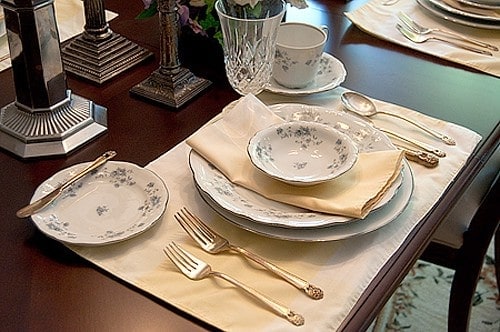
Good manners and proper etiquette were taught to me and my sisters from the time we were toddlers. My mother is an elegant woman, an elegant hostess, with impeccable manners. She has an innate sense of the “right way” to do things and the ability to put people at ease. Those abilities have served her well in some of the difficult social and political positions in which she has served.
Even though we grew up in a very small town in rural south Georgia, my mother made sure that we knew much about the world beyond. She made certain that we knew something of ballet, art, opera and theatre. And that knowledge has stood me and my sisters in good stead all our adult lives. One thing that was always present in my parents’ home was a properly set table. No matter how busy Mama was, no matter how many directions we were heading for our individual extracurriculur activities, there was always a family meal at a properly set table. Even now, should you enjoy a sandwich at my mother’s home, you will enjoy it at a table with a correctly laid place setting. As our mother often says, we were “groomed to sit at the King’s table.” And we would have been completely comfortable there. An elaborate table setting never caused us a moment’s anxiety because we knew with certainty how to navigate it.
I’m amazed at the number of adults I encounter who do not know how to set the table. But then I’m pretty obsessive about it. Early on it became a lifelong habit which I believe may now be actually imprinted in my DNA. I’ve even been known to rearrange the table settings at open houses and furniture showrooms. Maybe that’s not polite. Told you I was obsessive.
As food bloggers, cooks or hostesses we spend hours lovingly selecting and preparing beautiful food for our families, friends and guests. How then do we present our carefully crafted recipes? Do we plop it onto a plate and sit down in front of the television? I hope not. Properly setting a casual table takes very little time. Maybe five minutes in total. Surely everyone can find five minutes during the day to make meal time a pleasant experience? If setting the table is not a ritual at your house, I’d like to challenge you to try it just once this weekend.
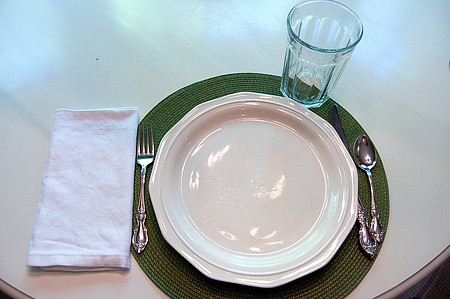
A basic, casual table setting consists of a placemat to protect the table, a dinner plate set in the middle of the placemat, a dinner fork to the left, a knife and sp0on to the right. The cutting edge of the knife is always turned toward the plate. The napkin is folded and placed to the left of the fork. The glass is placed near the tip of the knife. Simple!
I have found that children do really enjoy setting the table. It becomes part of the mealtime ritual and helps them feel a part of the preparation. Even the smallest ones can help.
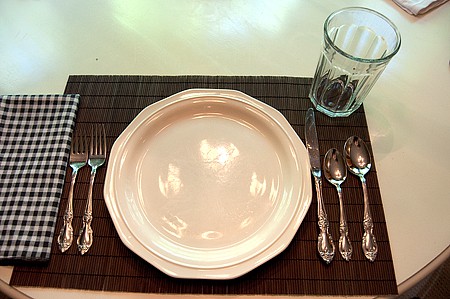
This place setting is a little more involved. You see that there is an additional fork and spoon. The fork to the far left is the salad fork and the spoon to the far right is a soup spoon. This tells you, of course, that the meal will include a salad and a soup of some kind. We were having a tossed green salad and chili with this meal, thus the need for the additional flatware.
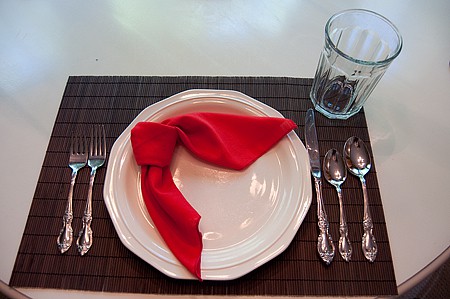
Now, I am not a complete stickler for the table setting rules. I’ll play around a little with napkins and extra pieces. It can make the table much prettier to use a vibrant napkin tied as shown above and placed on the plate. I know it’s not exactly proper but it shows a little more personality!
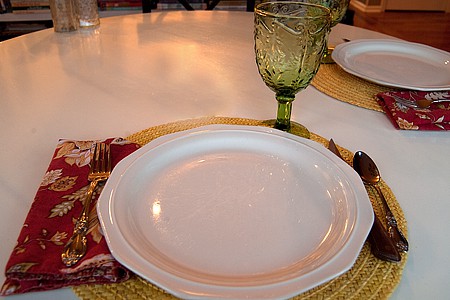
And, finally, here’s a colorful casual table setting that I use quite often. You can see right away that we’re probably having steak with this meal because the dinner knife has been replaced by a serrated steak knife.

Now, about that table setting from the top of this post. This is still a casual setting, but admittedly there is more to “decode” here, so let’s take a look. Remember that the flatware is used from the outside to the inside. So, first, we can see that we will be having bread with our meal and that there will be something to spread on it. The bread plate and butter spreader at the top left of the place setting give that away immediately. Also, since there’s a salad fork present, we’ll be having a salad course as well. On the far right, there is a somewhat different spoon. It’s larger and has a rounded bowl – a cream soup spoon. We may not know what the soup is but we know it won’t be brothy, right? The cup and saucer along with the stemware tell us that both a cold drink and coffee will be offered. Admittedly, this table setting is one that you would rarely see these days, but I’d rather know what to do when confronted with it, hadn’t you?
Before I wrap up this post, let me touch on one more thing. Table manners or dining etiquette. Do you teach your children to use good table manners? I know, I know, you’re so busy you don’t know whether you’re coming or going some days and table manners may be the last thing you have on your list of to-do’s. But, young parents, please believe me – it makes a difference. Not only table manners, but manners in general.
As Emily Post said, “Manners are a sensitive awareness of the feelings of others. If you have that awareness, you have good manners, no matter what fork you use.” Bravo, Emily! I completely agree. Everyone needs to know that they should place the napkin in their lap, how to hold a fork and knife, not to place their elbows on the table and to chew the food with their mouths closed. These are just so basic and easy to teach and go a tremendous distance to make meal time a pleasure. I’ve heard lots of people say, “Oh we’re just casual at home, but when we go out we make sure the kids use table manners.” My thought on that is that if children practice their table manners at home then you don’t have to worry when you go out to eat. They already know what to do and you don’t have to spend the entire meal teaching and correcting.
Whew. This has been a really long, wordy post. And, honestly, I hope it didn’t come across as being stuffy, or boring, or terribly old fashioned. I just feel deeply about some things and this is one of them!
You know what? Instead of old-fashioned, I’m going to start calling table setting “Granny Chic.” Yeah. That’s it! Granny Chic! So, go on and practice a little Granny Chic today!
I’d really like to know – do you routinely “set the table” in your house or is that an idea that is hopelessly old fashioned for you?
Other posts on table setting and dining etiquette:
- How to Set a Table from Architectural Digest
- Guide to Table Manners from the Etiquette Scholar
- Table Manners for Kids (and Parents) at Family Education
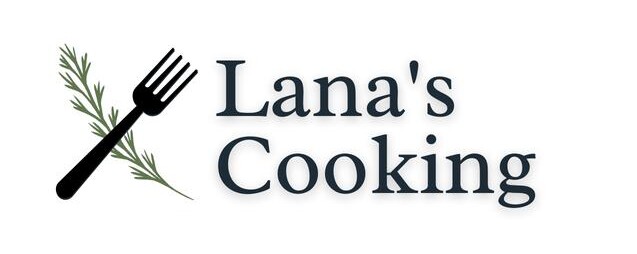
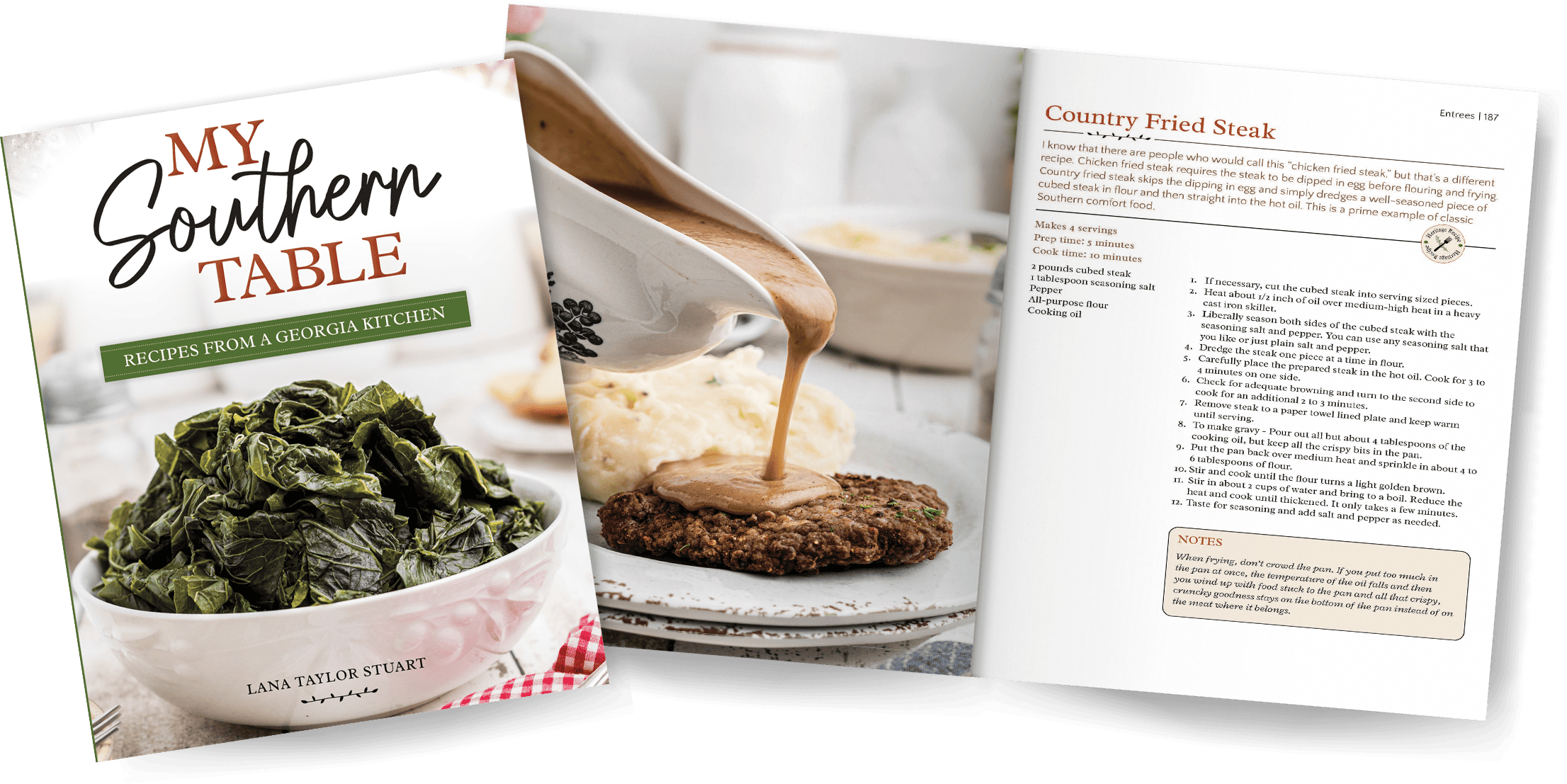
You linked back to this post today. It is still one of my favorite of all time. Setting a gracious table, while ensuring that everyone is comfortable, is a talent often overlooked these days.
Miss P
I’m 30 yrs. old and always grew up with proper manners. We set the table every single night and ate together as a family. Yes please and no thank you for whatever you were asked. My parents were very strict. I raise my son the very same way. He sets the table and I cook and serve. He clears the table and together we wash and dry. I love this post!
Hi Lana,
First-time commenter here. :o) Just wanted to let you know that I really enjoyed this post. As a first-generation American, I grew up with a completely different set of “table manners.” Growing up in an Asian household, it was more “don’t speak unless spoken to.” And chopsticks were a mainstay.
I make an effort to set the table before every meal. How I do it mostly based on what I’ve observed over the years. Thank you for pointing some things out that I’ve never caught on to!!!
Thanks again – now I might have to plan a 5-course meal, just to use up all the table items!!!
[K]
Thanks, Kim! I’m so glad I could help. There are lots of “rules” about American table settings but in this post I wanted to go over most of the basics. If you need more indepth information, just let me know. I’ll get out my copy of Emily Post :-)
I enjoyed your post. My 3 children are adults now and it was always challenging to try to teach them good table manners. It was exasperting but worth the effort. I do believe they appreciate what has been taught to them. It’s nice now to set the table for just the 2 of us and enjoy a nice meal, whether it be in the dining room or our little bistro table. Thanks for your share.
It really takes so little effort – just a few minutes, but makes the meal so much more civilized and enjoyable.
I love this article and appreciate the reminders about some pieces I rarely use. Here’s a tip I use to help me: the words fork and left both have 4 letters, while the words right, knife, and spoon have 5, so fork goes on the left and knife & spoon on the right. My children have homes of their own now, but growing up the job of setting the table was always one of the chores about which they never complained.
I love this post and everything that it stands for. I do not set my table on a regular basis but was brought up by a grandmother who “made” us learn the proper way to set a table (and hers was set for every meal). We were even scolded for improper settings. It just feels refreshing to sit down at a table that has been set and it needs to be practiced more often. Thanks for inspiring me!
I try to set the table pretty but not at every meal. Life is busy and with different schedules, I’m happy for the meals we do have together! Great post!
Great post and great for me to know! thanks!
God Bless you—this is the way I was brought up as well! Thank you!!!
I have so enjoyed the comments. We are so fortunate that Mama taught us, lovingly, by example. Today would have been their 57th Anniversary. I think Daddy is smiling right now.
Miss P
You flatter and honor me with your comments. Thank you.
Bravo! Our 4 year-old daughter is responsible for setting our table and is learning to do it correctly. In fact, I checked to make sure that you said something about the cutting edge of the knife facing the plate. :)
Yes, our family ate around a properly set table every night, as do we.
I think it great that you posted this. I wouldn’t know what to do if I planned an elegant dinner party. I’ve have been tempted many time, but it’s just that I wouldn’t know how to set the table appropriately.
Well said and well done. Need I say more?
Beautiful tableware! I cannot honestly recall whether my mother taught me how to set a table, or whether I learned it in my Home Economics class at school. They no longer teach that class (quite a shame) however I have tried to teach my daughters both proper manners and how to set a table…among other things domestic.
There definitely needs to be a resurgence of all things domestic…home should be a place of rest and rejuvenation, not stress and frustration….sorry, off the soapbox now! lol
Loved your post. I’m glad to see that genteel ladies still exist!
I’m only 22, but luckily grew up with the same manners being taught at an early age. I could properly set the table by the time was 5 and remember the dirtiest looks whenever I didn’t respond with a sir or a mam. It might be a little off topic, but we can be an example with our manners in a world that is quickly forgetting that a smile can brighten someone’s day. Great article to remind those who know and to inform those that don’t.
I’m sometimes surprised by the puzzled looks I get when I say “thank you” or “you’re welcome” or even hold the door for someone else who is struggling with too many packages. People just really don’t know or expect good manners or kindness from others any more. It’s so sad.
I always set the table properly, though not always formally. I do love setting a formal table when the occasion warrants it. And I don’t consider it old-fashioned at all…just plain good etiquette. I’m teaching my son to do the same. Good manners and proper etiquette will never be out of fashion.
Joel, I’m so pleased with all the positive comments from this post! I was so ready to be told that I was a dinosaur and out of touch with today’s modern society. Whew…guess I’m not that old-fashioned after all!
AMEN! I couldn’t believe my eyes. I started on a very similar post this morning (obviously haven’t finished). But you have said and presented this much better – and probably more diplomatically – than I could have! Not snobbish! And I also agree with Emily Post! Good manners are just being considerate of others. I get nauseous when I hear someone clang their spoon against their teeth, slurp their coffee (which I know is great in some cultures, just not mine), and shove more food in their mouth than God intended for it to hold. Thank you for the reminders about manners and the proper table settings! Beautifully said and done!!
Thanks, Suz. My biggest pet peeve is parents who allow their children to run around and be loud in restaurants. Last weekend there was a child behind us who was literally standing up in his chair banging on the table and the parents said not one word to him. Basically ignored him and continued their conversation.
lovely post and pictures
It is funny that we would even worry about whether something like this would snobbish. Whether you are a stickler or not, setting a nice table is a lot of fun. With a theme this is the way we often have the best parties.
Jason
Yes, Jason, I love to do “themes.” Like a beach party table or a spring table with pastels, etc. So fun!
Love this post! I’ve never learned “proper” table setting. We had a way of doing it our home, the same way I do it now. It’s amazing to me how close real poor country (the way I grew up), middle class, and high class southern is in relation to manners. It seems now the very poor are SO CRUDE. My husband and I are VERY conscious of eating manners and yes mam and no sir. People in public giggle when they here my son and I talking, but I just tell him EVERYONE is impolite, and I AM right. I wonder how long that’s gonna last. We need to move I think, LOL.
Angie, You just keep teaching your son good manners and ignore anyone who laughs at you! He will thank you one day.
I loved this post! I admit I often stand befuddled in front of my table, trying desperately to remember which side the fork is supposed to be on. Your place settings are lovely and I will refer to this post often!
Gree, I’m so glad I could provide a reference point for you. But don’t let it stop you if you can’t remember. At least you’re making an effort!
Great post and beautifully set tables! I think it’s important to know how to set the table the “right way.” It looks nice and creates structure. It’s basic etiquette, but not everyone knows what goes where and what gets used first at a completely set table.
My professor told my class a story about how he when he first moved into his house, he had practically nothing but two entire set of silverware. He had special guests coming over, and set the table to the nines with every spoon, fork, and knife in the right place. It ended up landing him a really great job!
Yes, good manners, not just at the table, can often times make the difference in professional settings.
First, I think the world as a whole would benefit from a ‘return to good manners’. Learning good manners effects every aspect of one’s life.
As for the settings, my sisters and I have learned how to set a proper table from our mother as well. I knew what you were going to say before I read it, although the spoon for the creamy soup was new to me.
Thanks so much for such a lovely post! The world could learn a thing or two here!
Thank you for your gracious comment!
This post struck such a cord with me, Lana. Re the first half: I grew up in the American South during roughly (I think I’ve got a few years on you) the same era as you. Although my mother is and was elegant, deeply gracious, supremely kind, and a seriously intent task master regarding proper manners, she did not grow up even remotely wealthy or privileged, nor did her parents. I don’t think you need to worry about appearing to be elitist; you are simply describing the the American South, as it definitely was, and, to a significant degree still is. I still segue into “yes ma’ams” and “no sirs” at the slightly provocation, even at the local mini-mart.
The second half of your post, regarding table setting, also resonated. I’m in the process of disposing of my mother’s possessions now, and it brings back such memories and the lessons she impressed on me. Exquisite Limoges china, 8 pieces per place setting silver (marrow spoons anyone?), 4 pieces per place setting crystal,etc. How many lessons I received on dealing with them all and what wonderfully festive dinners we had with them!
Oh, Barbara. I just knew you would relate to this post. I have tons of silver and crystal, though not nearly so much as my mother. I try to use the fine china and crystal once a month, even if it’s just me and my husband. It really makes a meal special.
I think this is brave of you. Not snobby. A lot of people have few manners, weren’t taught them, and have no idea how to set a table. I know how but I rarely set it totally – no soup spoon, salad fork and separate knives and such as we don’t have meals like that. I put the correct silverware for the type of meal we are having. When we have a real dinner party, sit-down, then I put more silverware and fancier dishes. Otherwise it is just the Fiestaware and the usual fork, knife and spoon. I have taught my son what is appropriate though so he will remember this stuff for his adult years when it might be important. He has been taught manners, not that he uses them all that often, but he knows them. He is still a teenager and they have their own bad attitude anyway. When he is an adult, he will be a polite adult, I hope.
Thanks so much foodlvr! Keep doing what you’re doing and I’m sure he’ll be a kind, mannerly adult!
I really enjoyed your tablesetting post. I learned from my mother, reinforced by home ec, but we were all dumbfounded in Europe to face forks &/or spoons at the top of the plate. I was hoping you’d mention this so European waiters won’t think all Americans are ignorant of where dessert utensils go.
LOL, Relf. Yes, it is somewhat different in Europe. However, I write for a mostly American audience, so I decided to stay with our style of dining. European is slightly different, although on a recent trip to Ireland we had no difficulty at all!
You are a woman after my own heart! I am a stickler about setting the table correctly and it drives me a little nutty when the utensils are placed incorrectly. It seems like such a little thing, but I think that attention to detail like this set the scene for a great meal.
So right. It only take a few moments and the little details make such a difference!
I love this post Lana. I enjoy setting the table “properly” but do not do it nearly enough. I always thought the fork should go on top of the napkin…guess I was wrong!
Thanks, Winnie. I’m really happy that I’m getting positive comments on this post. I was really prepared for people throwing rotten tomatoes :-)
Thank you for this post. I’m trying to teach my 2-year-old son decent table manners, and while we’re rather relaxed at home (and by relaxed, I mean I put my forks on top of the napkins when it’s dinnertime, but otherwise my dinner table is set like yours in the first photo), I can already see a difference in his manners vs. some of his cousins’ whenever we have Sunday dinners with his grandparents. It’s a shame that table-setting is almost a lost art nowadays.
It does make a huge difference, doesn’t it? Both of my grandchildren have wonderful manners, thanks to their mother, and even the smallest one started asking to be excused from the table at the end of the meal when she was only three. She says, “I enjoyed it. Maybe I be excused?” It’s so precious.
Bravo! It needs to be said over and over again!!! I also was in charge of setting the table at home and I think that’s were my passion for table settings developed. I’ll tell you a funny story. Here at the lake I have had to blend my former “more elegant” apartment furnishings with the casualness of lake living. But I couldn’t bear to put away my silver which in the dining table means a silver tureen, a couple of rooster and candlestics. When my daughter’s friends visit and we sit at the table, set just like the one on top, you should see everyone’s table manners. That table, no matter how casually set, brings out the best in everybody so do follow tradition and protocol especially when your children and friends are at home. It pays off!!!
Sorry about the length of this comment, but it is a pet peeve of mine. I still correct my son and daughter and the former is having a second baby this sunday!
PS here’s another, the fork is never placed on top of the napkin!
Yes, Linda, I do know that the fork is never *properly* placed on top of the napkin, but as I said I’m not a total stickler for the rules at all times :-) I just hope people will try to take a few minutes to do a table setting and don’t want to discourage them by making them think they have to be so precise with it. I’m not always so perfect with mine, either.
Amen…
Thanks for spending your time to write this post. I am very touched by your interest of changing our culture to practice better manners. I, for one admit that I need to do a better job.
At our house, just having all of us sit and eat together seems to be the right things. But, I do think my girls would enjoy to set the table and I think it will also enjoy the eating process. You inspired me to try better. I really liked your settings as well!
Adelina – at least you are all sitting down together! So many families don’t find time to do that any more. If you get the table set, then that’s just so much the better!
I loved this post – I learned to do this in home economics class and it stuck with me all these years. Our teacher even took it up a notch and said the plate and flatware should line up on the bottom and be 1 to 1 1/2″ from the table edge. And the napkin should unfold from the inside corner. And yes, I always set it this way.
Vickie, Yes I do know that it should be a specific distance from the bottom, napkin with the opening to the upper right, etc. but I’m trying to just get people to set the table and sit down together. Too many rules, I think, will discourage that :-)
Great post! We always set the table at our house, to varying degrees of sophistication. I have a whole buffet filled with a variety of table clothes, napkins, napkin rings, chargers, and flatware options to choose from (I am perhaps deeply un-American and don’t believe in place mats). But I like to mix it up from time to time and make any ordinary meal feel special. I like to think of table setting, fine dining and entertaining as being luxurious, part of taking the time to pamper yourself and your loved ones. Instead of waiting for that special occasion which never seems to come around, why not make everyday special? It doesn’t have to be elaborate, or exceptionally fancy. It’s the little things, the little touches, that can make every meal feel like a vacation. Emily Post is correct. Manners, for the table and elsewhere, are an important life skill. A little manners can take you a long way. Thanks for this great reminder! =)
Thanks for your thoughtful comment, Jacob. I also have drawers full of linens and many, many sets of china that I use for both every day and “dressier” occasions. It’s fun to mix it up, isn’t it?
Is being left-handed a decent excuse for setting the table backwards? It’s a right-handed conspiracy!
Funny! I suppose we can excuse you!
Do you drive on the left side of the road? I’m left-handed and I’ve always set the table the correct way. I’m glad to see this post…too many younger families don’t teach their children the accepted way to set the table OR table manners and, believe me, the kids will pay for it later in life.
I’m left handed too and while our table is set correctly, once we sit down I do switch my fork and knife. Unlike some, I believe that the current table setting being the “correct” was created at a time when left-handers were considered “slow” and forced to switch. To accommodate those who have a different dominant hand is the polite and proper way to treat them.
You’re probably right! LOL
That is really interesting post. I really enjoyed reading it. And thanks for the picture to guide through steps. I love entertaining but not so good with setting tables this does help a lot.
Glad you liked it and found it helpful.